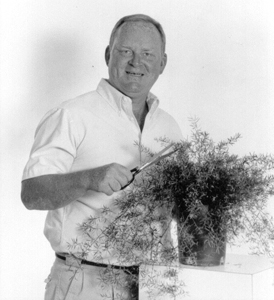TOMATOES, ALREADY?
 Whenever the weather warms up during the winter, no matter how early, the phone calls start coming in for tomato plants. While this is way too soon to be sowing the seeds, it is not too soon to be reading the catalogues and picking out the varieties that you will want to try. I always recommend growing your favorite “tried and true” varieties as well as a few new varieties just for fun. This is where the catalogue comes in handy.
Whenever the weather warms up during the winter, no matter how early, the phone calls start coming in for tomato plants. While this is way too soon to be sowing the seeds, it is not too soon to be reading the catalogues and picking out the varieties that you will want to try. I always recommend growing your favorite “tried and true” varieties as well as a few new varieties just for fun. This is where the catalogue comes in handy.
One of the best catalogues for tomatoes is Totally Tomatoes, 334 West Stroud Street, Randolph, WI 53956. Send away now for this exciting book of new, old and many unusual tomato varieties as well as a few peppers, carrots, egg plant and many other items of interest. Look for the earliest, the tallest, the shortest, the smallest and the largest varieties. Also look for the reddest, the best yellow/orange, the most purple and even a totally white tomato. It is really a lot of fun and as inexpensively as seeds are, you can afford to play around, just don’t start too early.
You should figure that a tomato seed, from the time it is sown until the time to plant the seedling outside is only 5 weeks, 6 at the most. If you go much past this allotted time you will injure your plants. They will grow too tall and spindly. Start your seeds on the 1st or 2nd week of April, no sooner. Pepper seeds take at least one, maybe 2 weeks longer to germinate. Temperature control changes with the age of the seedlings. Generally seeds like a warm beginning, such as 70 to 72 degrees followed by decrees in temps to 64 or 65. The cool-down keeps the plants more compact and sturdy whereas keeping the seedlings too warm makes them stretch out and grow weak.
People tend to put too much importance on fertilization but you should never fertilize seedlings. This is a sure-fire recipe for death. Plants in the seedling stage should be considered “intensive care” at least until they have been separated and transplanted into individual cells or small pots. This separation should be done as soon as possible to prevent “rotting-off” disease. Once they are transplanted and really taking off, you may consider fertilizing but only at half strength or less. Allow soil to dry between waterings but not to the point of wilting.
- Celebrating 20 Years Of Community At The Stand - April 12, 2024
- First Positive Case Of Chronic Wasting Disease In Indiana - April 12, 2024
- Southwest Allen County Schools Embark On Major Tree Plantings - April 12, 2024


